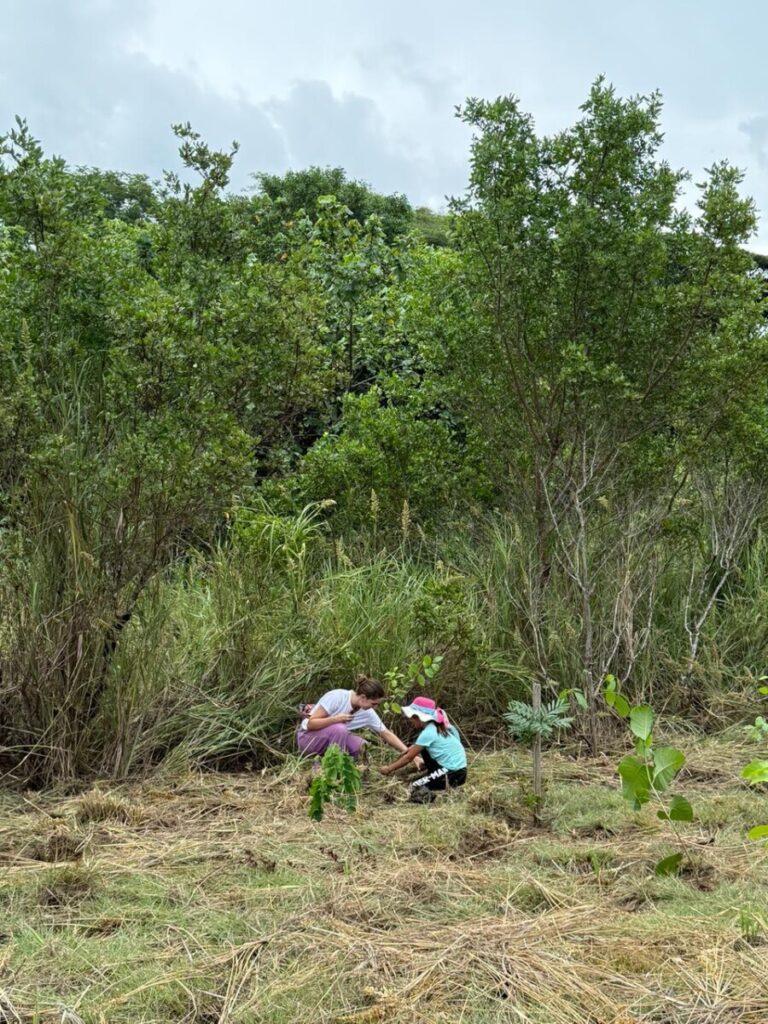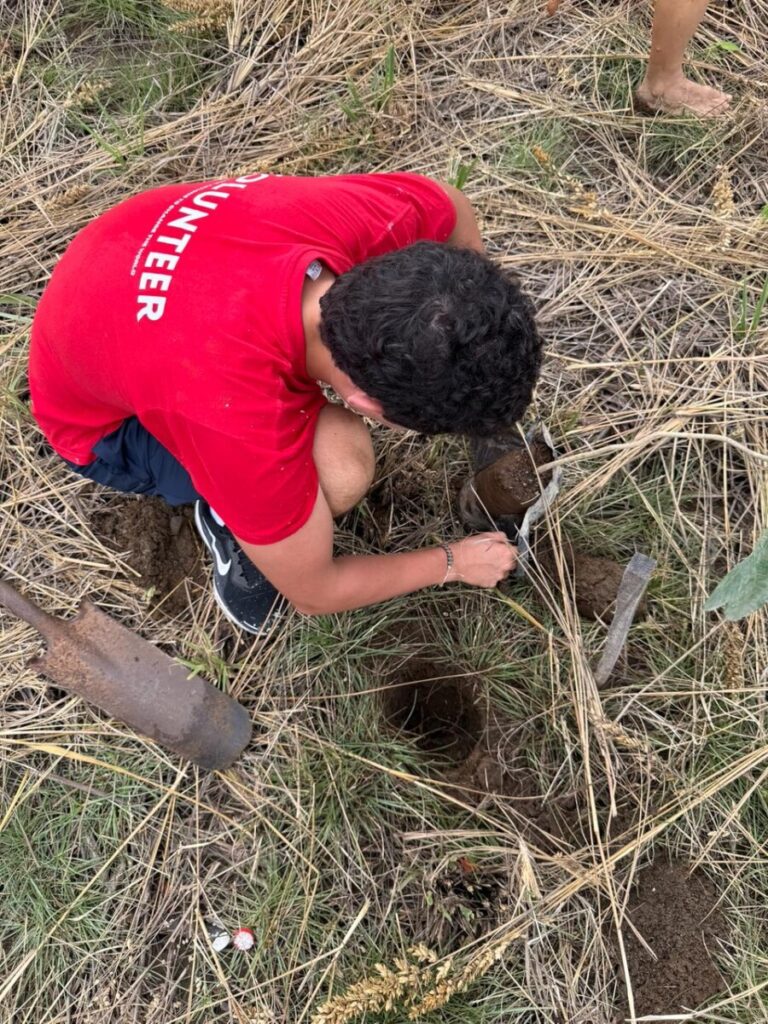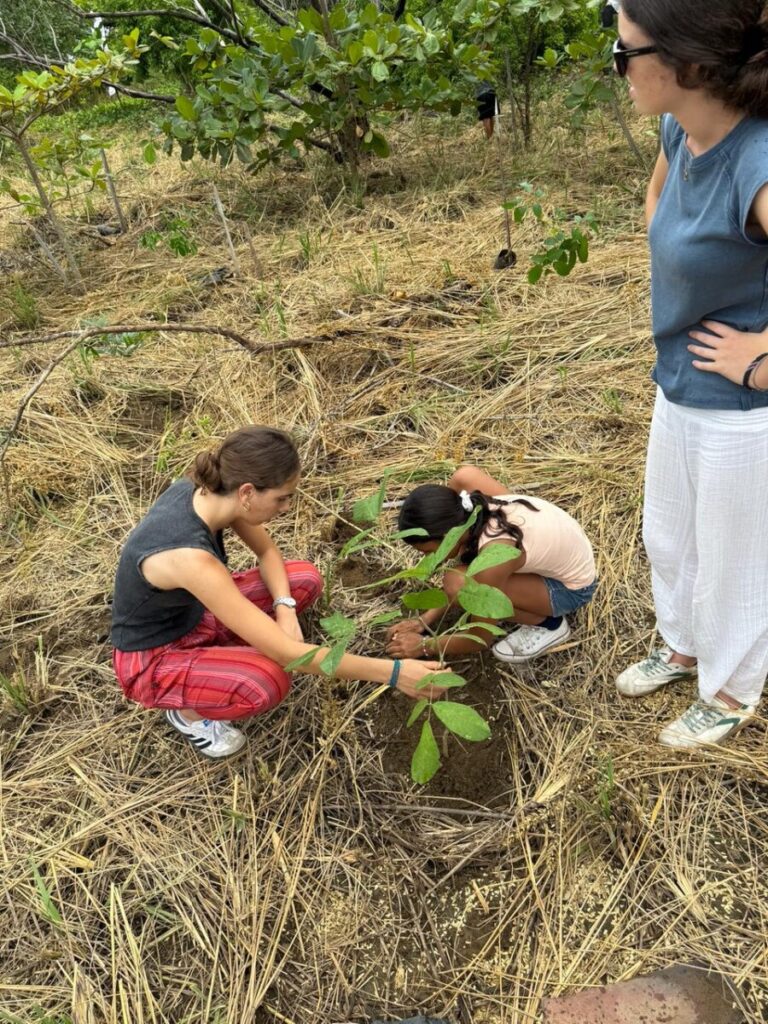Our Summer of Reforestation in Costa Rica
This summer has been special for our community of volunteers. Under the tropical sun of Costa Rica, between the Pacific breeze and the birdsong, we have worked on something that transcends the present: bringing life back to the land through reforestation.
In the coastal towns of Matapalo and Buenavista, we found beautiful landscapes, but also areas that have suffered the impact of deforestation, soil erosion, and loss of biodiversity. With each tree planted, we aim to reverse that damage and offer future generations a healthier and more balanced environment.

The importance of reforesting
Reforesting is not simply “planting trees,” it is rebuilding the foundation of life. Forests are true lungs that purify the air, capture carbon dioxide, and help regulate the climate. In addition, tree roots prevent erosion, retain rainwater, and enrich soils so that other plant and animal species can thrive.
In coastal areas such as Matapalo and Buenavista, vegetation plays an additional role: it protects the coastline from the force of winds and tides, safeguards habitats for marine and terrestrial species, and creates natural barriers against the advance of the sea, which is increasingly relevant with climate change.
Forests are also a refuge for biodiversity. In Costa Rica, one of the richest countries in flora and fauna on the planet, reforesting means reopening the doors to monkeys, birds, pollinating insects, and other species that depend directly on these ecosystems to survive.
How we experienced reforestation
Each day begins with a talk on awareness and learning. Local experts explain which species we are going to plant, why they are important, and how we should care for them. We always prioritize native species that adapt better to the climate and soil, such as beach almonds, guanacastes, or maderos negros, which are essential to maintaining the natural balance.
With gloves, shovels, and a lot of energy, we dig holes in the ground and carefully place the seedlings. The roots are covered with fertile soil and watered to ensure their adaptation. In some cases, we install protectors to shield the young trees from animals or extreme conditions.
Beyond the technical side, reforestation is lived as a human and community experience. Local and international volunteers work side by side, sharing stories, learning from Costa Rican culture, and feeling that they are an active part of a positive change.

Benefits that last over time
The most valuable thing about reforestation is that its impact multiplies over the years. A tree planted today can live for decades, even centuries, and during that time:
- It will absorb tons of CO₂, helping to slow climate change.
- It will generate oxygen, improving air quality for people and animals.
- It will serve as a home for birds, insects, mammals, and other species.
- It will strengthen the soil, preventing landslides and loss of nutrients.
- It will preserve water sources, benefiting entire communities.
On a social level, reforestation projects promote environmental education, strengthen the sense of community, and, in many cases, offer new economic opportunities linked to ecotourism and conservation.
Planting hope, not just trees
When a volunteer plants a tree in Matapalo or Buenavista, they are not just placing a seed in the ground. They are sending a clear message: we believe in a greener, fairer, and more sustainable future.
This summer, each person who joined us left an indelible mark. The trees that today are only a few centimeters tall will one day provide shade, shelter, and food; they will become part of the landscape and silent witnesses that there were people who decided to take action.
In a world where environmental challenges seem enormous, reforestation reminds us of something simple but powerful: change begins with small actions that, multiplied, transform the planet.
Curiosities
- Costa Rica is home to 5% of the world’s biodiversity in just 0.03% of the Earth’s surface.
- The country has managed to recover much of its forest cover, going from 21% in the 1980s to over 50% today, thanks to conservation policies and community projects.
- A single mature tree can absorb up to 22 kg of CO₂ per year and produce enough oxygen for two people.

At Cooperating Volunteers, we believe that traveling can be much more than getting to know a place: it can be about transforming it positively. If you want to experience planting life, learning from Costa Rican culture, and directly contributing to the planet’s health, we invite you to join our upcoming reforestation campaigns.




